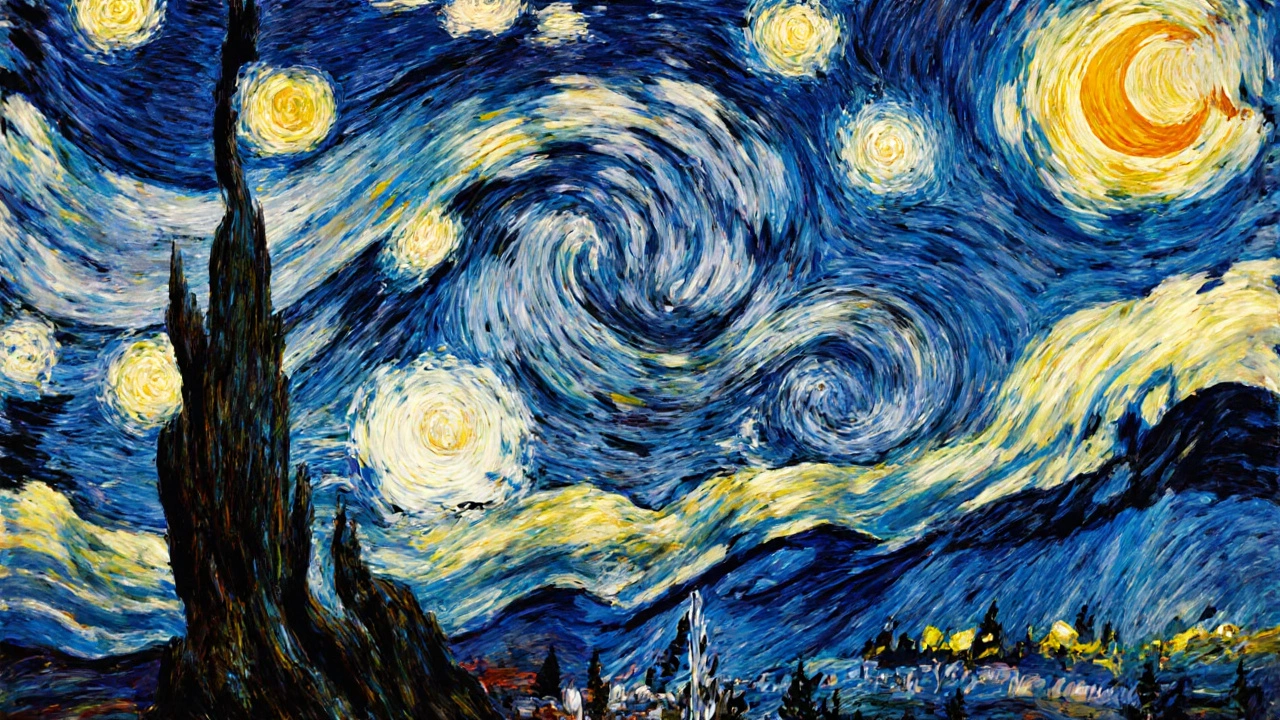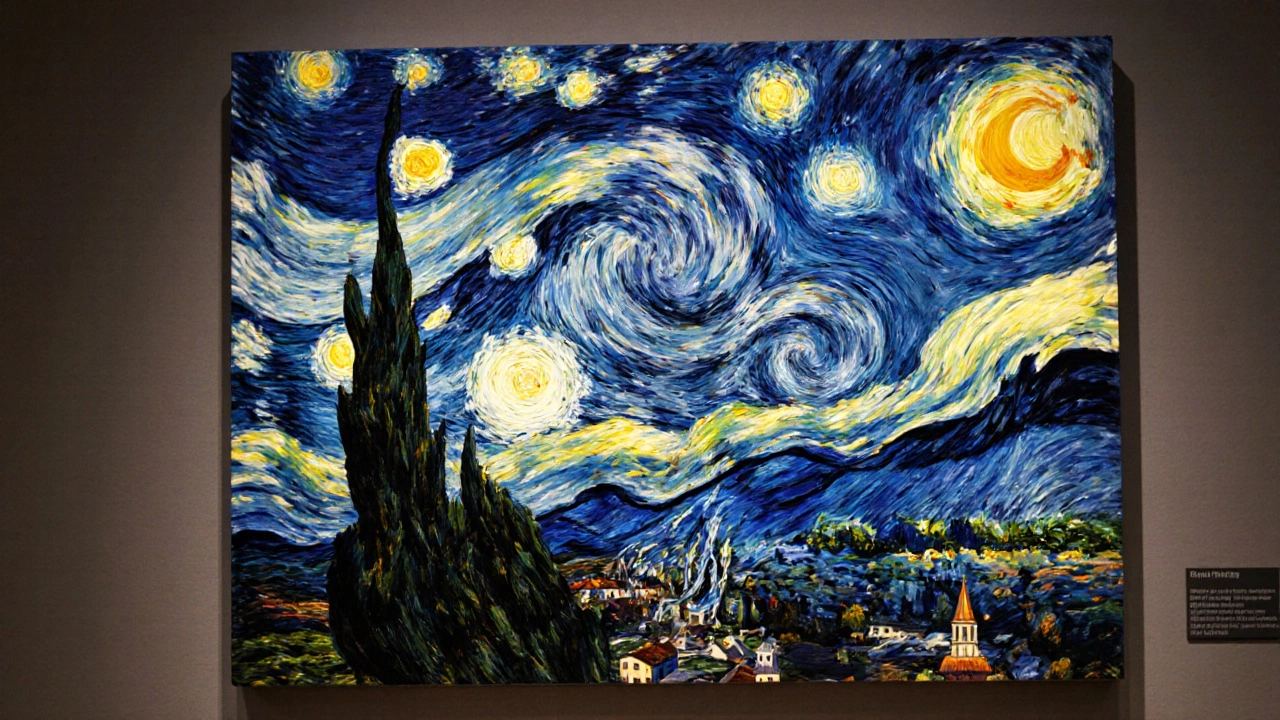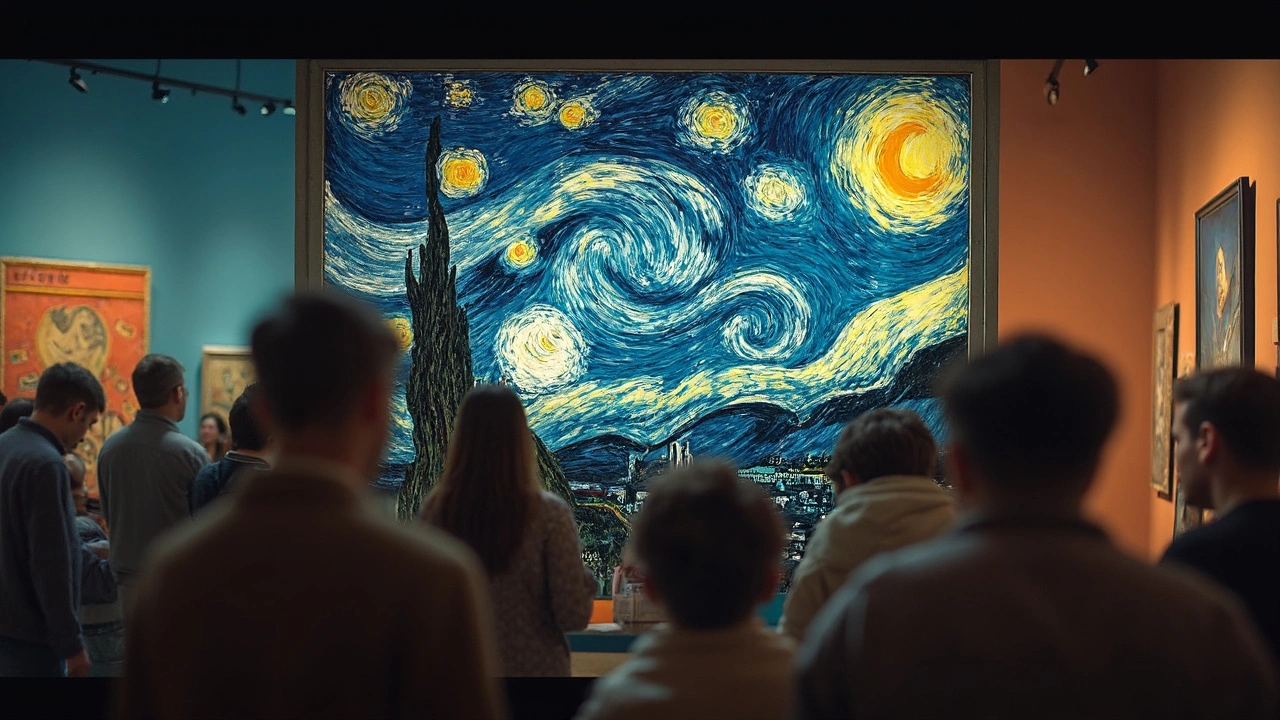Starry Night: How This Classic Can Boost Your Own Art
If you’ve ever stared at Van Gogh’s Starry Night and felt a pull to pick up a brush, you’re not alone. The swirling sky, bold blues and bright stars still fire up artists of every level. This guide shows why the painting works and gives you easy ideas to add that magic to your own projects.
What makes Starry Night unique?
First, the colour. Van Gogh used deep ultramarine for the night sky and mixed it with lighter blues and whites to create a glowing effect. The contrast between dark and light makes the stars pop. You can copy this by starting with a dark base, then adding thin, bright highlights while the paint is still wet. It works in oil, acrylic or even water‑colour – just keep the layers thin.
Second, the brushwork. Notice the curved, almost hypnotic strokes that form the clouds and hills. Those strokes aren’t smooth; they’re short, textured dabs that give the scene movement. When you paint, try using a stiff brush or a palette knife to create short, directional marks. Even a simple landscape can feel alive with that touch.
Third, the composition. The horizon sits low, letting the sky dominate the canvas. The cypress tree on the left adds a vertical line that balances the swirling clouds. In your own work, place the main focus low or high to let the surrounding space breathe. Use a single strong shape—like a tree, a building or a person—to anchor the piece.
How to bring Starry Night vibes into your own work
Start with a quick colour test. Mix a dark blue with a touch of black, paint a small swatch, then add a dab of white or yellow on top. If the white glows, you’ve got the right contrast. Next, practice the brush strokes on a scrap piece. Move the brush in short, curved motions, varying pressure to create thick and thin lines. Do this for a minute, then step back and watch the pattern form.
When you feel confident, apply the technique to a simple subject—maybe a night cityscape or a garden under moonlight. Keep the horizon low, let the sky take most of the space, and use the swirling strokes for clouds or water. Add one bold vertical element, like a lamppost or a tree, to give the piece structure.
If you work in digital art, the same ideas apply. Use a dark blue background layer, then brush on lighter blues with a soft round brush. Add sparkle with a hard small brush set to a bright yellow or white. For texture, try a scatter brush that mimics the short, choppy marks of Van Gogh’s hand.
Lastly, don’t overthink it. Starry Night is famous because it feels raw and emotional. Focus on what excites you—whether it’s the colour, the movement, or the mood. Let those parts guide your decisions and you’ll end up with a piece that feels personal and fresh.
So next time you see that night sky, remember these quick steps. Grab your brushes, mix the blues, and let the swirls flow. You’ll be creating art that nods to a masterpiece without copying it. Happy painting!

16 Nov 2025
Starry Night by Van Gogh looks like watercolor, but it was painted with thick oil on canvas. Learn why the medium matters, how Van Gogh achieved its movement, and why watercolor could never replicate it.
Continue reading...

30 Oct 2025
Starry Night isn't abstract - it's post-impressionist. Van Gogh twisted reality to express emotion, but never erased it. Learn why this masterpiece is often misunderstood and what truly defines abstract art.
Continue reading...

10 Apr 2025
Van Gogh's 'Starry Night' is an iconic piece of modern art, sparking curiosity about its current ownership. This article explores who technically owns the painting, its journey through history, and its significance in the art world. Understanding the painting's background provides insight into how such masterpieces circulate in the art scene. Additionally, we delve into why its ownership matters not just for collectors but for art enthusiasts too.
Continue reading...


